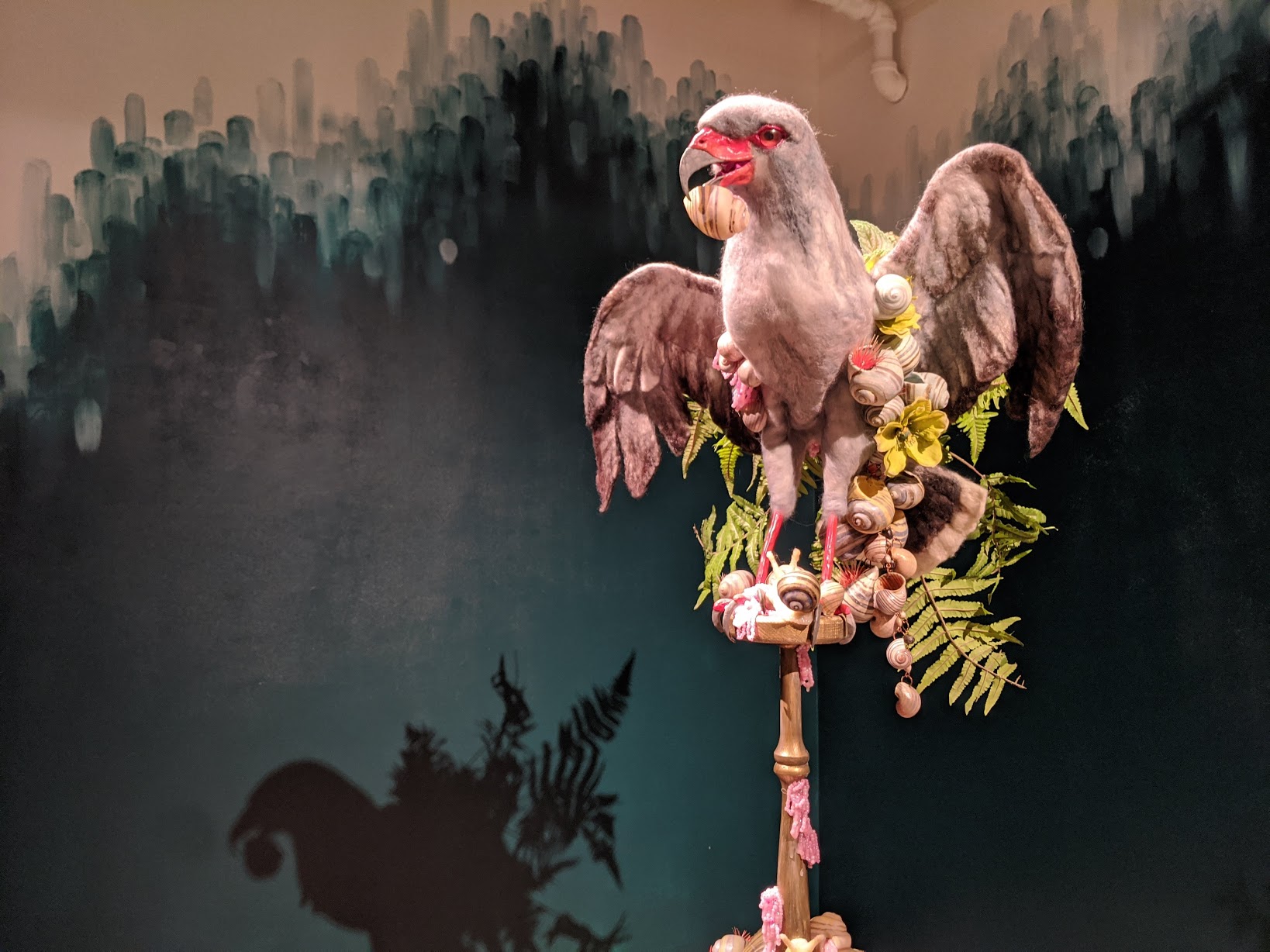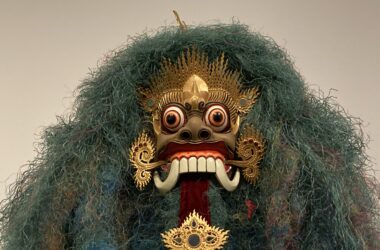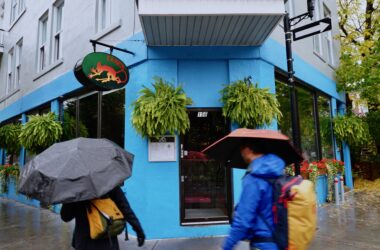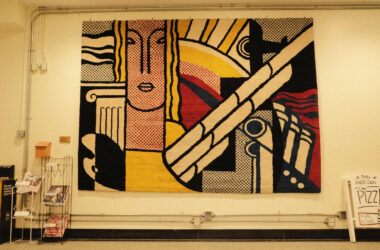At once familiar and shocking, tame and wild, gluttonous and skeletal, moving and lifeless, The World Is Bound By Secret Knots is a rainforest of mesmerising, ersatz creatures. From Sept. 5 to Oct. 24, the Art Mûr gallery in La Petite-Patrie is showcasing Montreal-based artist and writer Emily Jan’s animalistic sculpture installations, inspired by Jan’s time spent in the Amazonian Rainforest. Jan’s vision for the exhibition focusses on ideas of temporality, death, and how we as human beings interact with—and harm—the flora and fauna around us.
Combining materials such as resin, silk, faux flowers, and common objects, Jan creates sculptural installations that display mystical combinations of animal bodies, human artifacts, and false greenery. Apologue IX: Honey Creeper, 2018 is a splendid example of this hybrid multimedia work. Featuring a Honeycreeper bird with a glaring, red, bulbous plastic eye, Apologue IX: Honey Creeper, 2018 hangs from the exhibit’s ceiling on a craggly plastic branch, its scaly claw grasping around the edges. The bird’s beak and body are built of a tree-bark material, and as the bird curls and becomes one with the tree: Its tail sprouts leaves, first green, progressively yellowing, and finally shooting up with a burst of pink flower blossoms.
The bird is visibly and garishly synthetic, and yet, the attention paid to the form and fold of its body makes it feel as if viewers are actually staring at the taxidermied figure of a Honeycreeper. Jan’s work thrives in this space of phoney kitsch and underlying macabre realism.
As the exhibition progresses, Jan’s work becomes darker, as the animals are no longer just made up of consumer goods, but are engulfed by them. Particularly striking, Apologue VI: Octopus, 2018 features a pink octopus made of wool and resin drowning in human waste, suffocated in shattered tea cups, ribbons, vases with prickly flowers, and a gurgling yellow liquid, all served on fine china plates. With a glossy life-like eye, it is impossible to look away from the struggling animal as the gluttonous artifacts swallow it whole. The piece is strongly reminiscent of photos of octopi making homes in human waste and of other sea creatures trapped in beer cans and plastic bags.
Jan pushes this idea even further as objects begin to consume the animals, causing them to lose their limbs and even their faces. In Apologue IV: Slow Loris, 2017, a monkey and a bird communicate through a telephone wire. Rather than seeing the animals wholly, we see only the ominous tail feathers of a poultry bird sticking out as her body dips into a rose-rimmed china tray, while the monkey’s face is replaced with a stream of plastic white flower necklaces. The stylized bizarreness of the work is highlighted by the plastic pears strewn around the table, placed in a purposefully asymmetrical and eerie manner, reminding viewers that human hands have irreversibly altered what they have touched.
By the end of the exhibit, the message becomes clear. The shells filled with pink-bead bracelets instead of tentacles, the slugs slinking upon Christmas ornaments tangled in dead white coral, the birds with nests made of shredded money perched upon dehydrated cacti, are all begging the viewer: //Remember us//. Through the juxtaposition of wildlife with everyday objects and plastic decorations, Jan shows how inhospitable of an environment humans have created for animals, and warns us of the effects that our careless consumerist culture has had on the natural world. We have a responsibility to nature, Jan reminds us, and we must do better.







